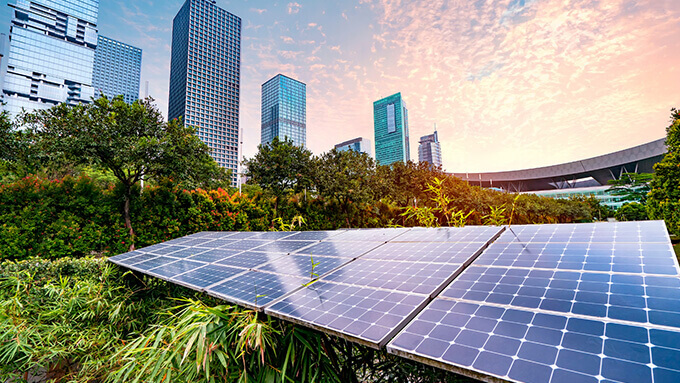Draft Regulation on the Operation of Carbon Markets
Introduction
Under the Presidency’s Annual Program contemplating that a national carbon pricing mechanism to be established and an emissions trading system to be implemented in compliance with the EU regulations and Türkiye’s long-term target of achieving net-zero carbon emissions, The Energy Market Regulatory Authority (“EMRA”) has announced on 13.11.2023 the Draft Regulation on the Operation of Carbon Markets (“Draft Regulation”).
The Draft Regulation aims to establish an emissions trading system (“ETS”) and includes provisions concerning how Turkish ETS will be operated. This newsletter will discuss the fundamental provisions and concepts of the Draft Regulation.
General Remarks
The Draft Regulation contemplates the establishment of primary and secondary carbon markets in Türkiye. Similar to European ETS, the main structure is based on (1) determining total carbon allowance, (2) distributing the allowances to the market participants and (3) creating a structure whereby the carbon allowances may be traded between the market participants. In that regard, the primary carbon market is where the carbon allowances will be distributed to the market participants through tenders. The secondary carbon market is the spot market where allowances are traded through continuous trading and the forward carbon market with physical delivery. According to the Draft Regulation, the primary and the secondary carbon markets will be operated by Enerji Piyasaları İşletme Anonim Şirketi (“EPİAŞ”).
Concerning the scope of the Draft Regulation, it is noted that the draft makes the definition of “operator”. According to article 3/1-g, “operator” means persons who carry out the activity or operate the facility specified in Annex-1 of the Regulation on Monitoring of Greenhouse Gas Emissions published in the Official Gazette dated 17/5/2014 and numbered 29003 (“Sera Gas Emissions Regulation”). However, it is also noted that the Draft Regulation does not use the word “operator” elsewhere with a capitalized first letter, but uses other expressions such as “operators within the scope of ETS”. Taken as a whole, it is possible to conclude that those listed under Annex – 1 of the Greenhouse Gas Emissions Regulation will be participating in Turkish ETS as per the provisions of the Draft Regulation.
The general principles of Turkish ETS are set out in article 4 of the Draft Regulation. Article 4/1 reaffirms that the primary and the secondary carbon markets will be operated by EPİAŞ, which is named as the market operator. EPİAŞ has a central role in the establishment and operation of Turkish ETS. Its general responsibilities are listed under Article 6 of the Draft Regulation.
It is noteworthy that article 4/6 puts a general obligation to refrain from actions that may prejudice market and/or system operation. Hence, the market and/or system participants are prohibited to engage in activities that may manipulate the prices or otherwise distort the due functioning of the market and/or system.
Primary Carbon Market
In order to register to the primary carbon market, the operators will need to create an account on the transaction registration system, which is to be established by EPİAŞ, and also execute the market participation agreement for the primary carbon market.
In the primary carbon market, as per Article 11 of the Draft Regulation, the allowances will be determined annually and will be offered for sale through tenders. According to the same provision, the principle is that the total amount of allowances to be put out to tenders in a year is distributed equally among the tenders. That being said, it is noted that the Draft Regulation does not specify how the annual allowances will be determined in the first place.
EPİAŞ is obliged to prepare the tender schedule for the following calendar year and submit it to EMRA by the end of October. Following EMRA’s approval, the tender schedule will be announced by the last business day of November at the latest. The tender schedule should include the details regarding the planned tenders, such as their dates, time for starting and ending the sessions, and the amount of allowance which will be offered.
The market participants may only place buy orders in the tenders. According to Article 16, the bids will be sorted from the highest to the lowest. As for the bids with the same prices, bids entered first are ranked higher than bids entered later. Thereafter, the allowance amount offered for sale will be matched with purchase offers. The price of the last bid offer that fully or partially matches the amount of allocation offered for sale is determined as the carbon reference price (“KRF”). Irrespective of the price offer submitted for each matched order, as per Article 16/2, the market participants’ payment obligations will be calculated based on the KRF.
Secondary Carbon Market
The secondary carbon market consists of spot markets and bilateral agreements. In the spot market, the system participants are allowed to execute buy or sell transactions concerning their carbon allowances in their transaction registration system accounts. Hence, in the spot markets, the market participants may submit their bids to buy or sell. The market participants’ buy and sell bids are matched through the system. The rules regarding how the buy bids and sell bids are matched are set out in detail under articles 22, 23, and 24 of the Draft Regulation.
The system participants may also execute bilateral agreements. According to the Draft Regulation, allowance bilateral agreements are defined as commercial agreements between system participants whereby allowances are bought or sold. Bilateral agreements should be notified to EPİAŞ. According to Article 25 of the Draft Regulation, the notification should be jointly made by the seller and the buyer. A notification made only by one of the parties will not be valid.
Operation of the Markets
After the Draft Regulation becomes effective, EPİAŞ will determine the settlement institution which will act under the realm of the Draft Regulation. EPİAŞ will also be responsible for the calculation of the security amounts that the market participants are obliged to submit and timely notify the market participants. It will regularly compare market participants’ current security amounts with the amount of security they are obliged to provide and request the market participants to submit additional security if required.
Article 27 provides that the market participants will open their accounts before the settlement institution to be designated by EPİAŞ as well as intermediary banks. Thereafter, they will be obliged to comply with the security and payment obligations arising from their activities in the carbon markets. Article 29 includes the methodologies that will be applied in calculating the amount of securities that will need to be submitted by the market participants.
The Draft Regulation contains detailed provisions regarding commercial transaction confirmations, invoicing, and payments as well as limited cases whereby the market participants may object to the settlement notifications and/or invoices. It is also important to note that Article 42 explicitly provides that any assignments or pledges regarding the responsibilities under the Draft Regulation are not valid against EPİAŞ. Similarly, rights under the Draft Regulation may only be assigned or pledged with EPİAŞ’s confirmation.
Conclusion
As noted above, the Draft Regulation contemplates the determination of an overall carbon allowance, which will be distributed through the primary carbon market and traded between the market participants through the secondary carbon market. When it enters into force, the Draft Regulation will certainly play an important role in terms of reducing Türkiye’s carbon emissions towards the ultimate goal of net-zero.
All rights of this article are reserved. This article may not be used, reproduced, copied, published, distributed, or otherwise disseminated without quotation or Erdem & Erdem Law Firm's written consent. Any content created without citing the resource or Erdem & Erdem Law Firm’s written consent is regularly tracked, and legal action will be taken in case of violation.
Other Contents

Recently, financial, social, and environmental challenges experienced in our country and around the world have increased the sensitivity of societies and the business world toward sustainability. While developments in the field of sustainability continue at the international level, Türkiye has also been implementing...

As of 2025, the field of Environmental, Social, and Governance (ESG) has witnessed substantial progress both globally and within Türkiye. Driven by the objectives of sustainable development, there is a growing expectation for private sector actors to mitigate their environmental impact, uphold social...

The Climate Law Proposal ("Law Proposal") was submitted to the Grand National Assembly of Turkey on February 20, 2025. Climate law is part of the primary legislation and policy documents being prepared to enhance Turkiye's climate actions, to complete them as soon as possible. This development is an...

Sustainability is an important term that we have recently focused on to meet the needs of both present and future generations. This concept, which addresses economic, environmental, and social dimensions, requires extensive responsibilities and gains meaning through comprehensive cooperation...

In recent years, it has been observed that financial statements are insufficient for the evaluation of long-term company performance and investors now require non-financial information as well as financial information when making decisions...

Companies are undergoing a transformation and development in terms of their objectives nowadays. There is no doubt that the main purpose of companies is to generate profit. However, while achieving this goal, companies should not ignore their impact on the environment and society and should act responsibly...

As this newsletter moves into a more sustainable future with eco-friendly Exlibris, so does the EU’s financial markets regulator and supervisor, the European Securities and Markets Authority (“ESMA”). In light of its 2023-2028 strategy , ESMA supports the Environmental, Social and Governance (ESG) transition by...

In 1987, the United Nations World Commission on Environment and Development published a report entitled “Our Common Future”. The report drew attention to the causes of global environmental problems and defined sustainable development as “development that meets the needs of the present without compromising...